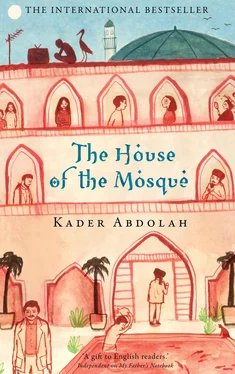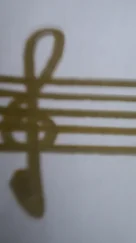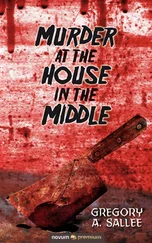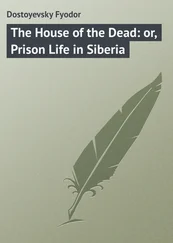Eight US servicemen died and four others were wounded. After the crash the remaining transport planes had flown directly back to the carrier.
A shepherd, curled up beneath a tree by an old water well at the edge of the desert, was jerked out of his sleep by an unfamiliar sound. He sat up and peered into the inky darkness. A column of smoke was rising into the starry sky.
He climbed into the tree and saw a distant fire. Realising that there must have been some kind of catastrophe, he left his flock and ran to the nearest village. Half an hour later the villagers were all standing on their roofs, staring at the blazing fire.
The village imam hurried over to the mosque, opened the door, picked up the phone — the only one in the village — and dialled Ayatollah Araki’s number. ‘Flames are shooting up out of the desert! Our village elders have never seen anything like it. Something terrible must have happened!’
The ayatollah immediately ordered the commander of the Islamic Army to drive into the desert and check out the fire. Forty-five minutes later the ayatollah picked up his red phone and called the Khomeini residence in Tehran. ‘Flames are shooting up into the sky! It looks like a couple of planes have crashed, but the heat is so intense we can’t get any closer!’
Before Tehran could put together a reconnaissance team and dispatch it to Senejan, the villagers had ridden out to the scene on their donkeys and tried to rescue the wounded.
The authorities still didn’t know exactly what had happened when Radio Moscow made an announcement on its six a.m. news: ‘Two US aircraft crashed in the desert of Iran near the city of Senejan.’
Muezzin, who always tuned in to the morning news, heard the announcement, but failed to grasp its significance. Only when he heard the word ‘Senejan’ in the repeat broadcast did he go to Aqa Jaan and say, ‘Two US aircraft crashed in the desert!’
Iran’s state-controlled television opened its two p.m. news with a live report from the crash site. First the camera zoomed in on the bodies of the Americans, then Ayatollah Araki appeared on the screen. Clutching a Kalashnikov in his right hand, he gave an impassioned speech. ‘Islam is a miracle,’ he began. ‘Even after fourteen hundred years, Islam is still a miracle!
‘Last night American planes entered our country from Iraq. They turned off their lights and flew in the dark, using the latest electronic equipment to avoid our radar. They planned everything down to the last detail and calculated everything on their super-intelligent computers, but they forgot to include one thing in their calculations: the Koran! We don’t need ultra-modern computers to make such calculations. We don’t need electronic eyes to monitor everything. There is One who watches over our country, there is One who protects us, there is One who takes care of things while we sleep, and that is Allah.
‘America has computers, we have Allah.
‘America has reconnaissance planes, we have Allah.
‘America! If you want to know who crashed your planes, read the Al-Fil surah:
A-lam tara kayfa fa‘ala rabboka be’as-habi alfeel.
Did you not see what your Lord did
To those who rode the elephants?
Did He not confound their treacherous plan?
He sent against them flocks of birds,
Which pelted them with clay pellets,
And left them like a field of half-eaten stalks. ’
Five months later, at around noon, three Iraqi warplanes flew over Tehran, flying so low that you could see the pilots in the cockpit. Everyone fled in panic at the deafening and altogether terrifying sound.
The planes bombed the airport. And with this surprise attack Iraq declared al-harb , war, on Iran.
The Iraqi army had crossed into Iranian territory the night before and occupied strategic targets in the southern oil-rich province of Khuzestan. Iran’s most important gas and oil refineries were now in the hands of Saddam Hussein.
The regime was shocked. People couldn’t believe it. Only after the first televised images had been broadcast, showing Iraqi tanks in front of Iranian oil refineries, did it begin to dawn on everyone that it wasn’t just a threat, but an actual war.
Khomeini appeared on television and urged all those who owned a rifle to report immediately to the nearest mosque. ‘It is jihad!’ Thanks to his call to arms, a large army of believers was mobilised within twenty-four hours. Thousands of men — both young and old, but none with any military training whatsoever — were crammed into buses and driven to the front.
Meanwhile, American spy planes, flying high above the war zone, had started photographing the movements of the Islamic Army and passing the information on to Saddam Hussein. As a result, Iranian troops were repeatedly bombed by Iraqi planes.
Khomeini, unbowed by defeat, inspired his people with courage. ‘Only death can save us now. America is monitoring our every move from above. We have no choice but to lay down a bridge of corpses that will eventually lead us to Iraq.’
An army of believers, clothed in burial sheets, took up their weapons and paved the way to the Iraqi army. The Iranians finally reached the Iraqi troops and began a war that would last for eight long years and result in the deaths of millions of soldiers on both sides.
The ayatollahs feared that the opposition would make use of the war to topple the regime. Khomeini had always been wary of the leftist movement. He thought of their supporters as enemies of Allah and the Koran, so was waiting patiently for the right moment to crush them once and for all. In turn, the leftist opposition was secretly plotting to weaken the Islamic Republic and remove the fanatical ayatollahs from power.
To safeguard the home front, the regime decided to destroy the leftist movement there and then. Khalkhal was the first to be informed. ‘Tear it out by the roots!’ Khomeini ordered. ‘Show no mercy! Stamp out all those who oppose Islam!’
In less than an hour the leaders of the Communist Tudeh Party — all of whom had supported Khomeini — had been arrested. Yet the regime didn’t manage to get its hands on the leaders of the various underground groups. After the revolution, they had been radicalised and had debated whether or not to rise up in arms against the regime. The Tudeh Party, which had opted not to fight, had walked into the trap Khomeini had set for them.
Three nights later, the party’s elderly leader — thin, grey and unshaven — was paraded on the Islamic-controlled television as on object lesson. His spirit had been broken. It was evident that he’d been taken directly from the torture chamber and placed in front of the camera. He begged to be left in peace.
It was a grisly scene, a cleverly edited videotape intended to frighten people. And it worked, for on that same night the remaining members of the Tudeh Party fled to the borders and escaped.
In Senejan, Ayatollah Araki had been ordered to clear out the Red Village.
The Red Village was in its heyday. It had declared itself an autonomous zone with its own rules and regulations — an enclave in which young men and women had set up an idealistic Communist state of their own. After the harvest, they divided the crops equally among the villagers. In the evening people gathered in the village square and read aloud the poems of the Russian poet Vladimir Mayakovsky.
On the night of the attack, the villagers were sitting in the square, watching a Russian film, when all of a sudden someone shouted: ‘Tanks! They’re coming to get us! Block the road!’
But it was too late for barricades. Within seconds the square emptied. Some of the villagers fled to the mountains, others went inside and locked their doors, and the few who had rifles hidden somewhere got them out and climbed up to their roofs.
Читать дальше












